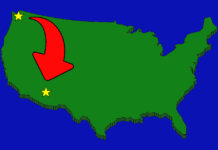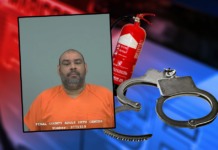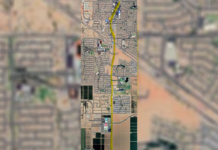
“My kind of town, Chicago is,” sang Frank Sinatra. And Chicago also is Maricopa resident Herman Neuberger’s kind of town, the town where he spent the “finest years of my life as a teenager.”
In homage to those memories, Neuberger has recreated the Chicago of the 1950s as the central feature of his intricate model train layout, 20-plus years in the making, and on display in the casita of the Province community home where Neuberger and his wife, Patti, have lived since 2005.
One needs to see the layout to believe it. And that’s just what the public is invited to do noon to 4 p.m. Saturday when Neuberger participates in the Short Line Model Railroad Club’s series of open houses, which includes six other layouts around the Valley.
Make a reservation to see Neuberger’s layout in Province by calling 520-568-5575.
Club president and Sun Lakes resident, Harry Huckemeyer, described Neuberger’s creation as spectacular. “He includes so many landmarks and it is fascinating the way he takes the trains from Chicago to Flagstaff.”
Neuberger recreated many Chicago landmarks — the Wrigley Building, which serves as the centerfold, the Drake Hotel, Goldblatt’s, the Merchandise Mart, Union Station and, on the somewhat seedier side, Lil’s Pleasure Palace.
The four train yards are the Heinz, Chessie, Illinois Central and Northwestern. Train tracks lie at ground level, below ground and above ground (elevated trains known as “els”). Trains depart from and arrive at different stations depending on which track line is chosen.
Among them are the elevated Chicago Avenue Station, the Holland Iron Company somewhere in the Rocky Mountains and a ski resort in Flagstaff. Neuberger admits to taking artistic license with time, distance and building locations.
“I wanted a reason for the trains. I wanted to add interest — not of just running the trains — but for the trains to have a purpose … delivering passengers or products to different parts of the layout. Thus, I invented the term ‘trip ticket’ to define the purpose of the trip,” Neuberger said, explaining visitors pick up a trip ticket that lets them choose which route they want to see.
Along each route, Neuberger’s precise attention to detail makes the layout come alive. Light effects include neon signs for Heinz Ketchup, Wonder Bread, Cracker Jack, to name just a few, which light the city at night, and eight stoplights control the flow of traffic.
Daylight shows residential areas with homes, trees and shrubs, sandlots where kids play and clothes hanging from miniature lines. Out of the city, the scenery reflects natural terrain with details such as an antelope perched on a Rockies’ mountainside and skiers zipping down slopes after riding the lift to the top.
Sound effects add to the authenticity — trains start and brakes screech, sirens scream and streetcars clang. Neuberger’s setup is powered by three circuit breakers and his elaborate control panels enable him to manage the sounds, lighting, and movement of the trains, streetcars and skiers.
Construction materials range from pre-manufactured kits which he “doctors” as necessary, cotton puffs to create the effect of smoke from chimneys and factories, dental floss for clotheslines, Styrofoam and rocks for the mountains, cardboard, wallpaper and matte board.




![Rizz party organizers say city ‘lying’ One of several flyers for a "TikTok rizz party" is taped to a door in the Maricopa Business Center along Honeycutt Road on April 23, 2024. [Monica D. Spencer]](https://www.inmaricopa.com/wp-content/uploads/2024/04/spencer-042324-tiktok-rizz-party-flyer-web-218x150.jpg)
![Province writer opens the athlete’s mind in new book Tom Schuman, a Province resident, poses with a copy of his new book, "My Wide World of Sports," outside his home on May 2, 2024. [Monica D. Spencer]](https://www.inmaricopa.com/wp-content/uploads/2024/05/spencer-050224-tom-schuman-sports-book-web-01-218x150.jpg)




![Merging lanes incite more 347 anger A merging lane sign sits on the side of State Route 347 northbound lanes during evening traffic on April 30, 2024. [Monica D. Spencer]](https://www.inmaricopa.com/wp-content/uploads/2024/04/spencer-043024-adot-merging-lanes-347-web-218x150.jpg)



![Carl’s Jr plans to “open soon” An exterior view of the new Carl's Jr. restaurant along John Wayne Parkway on May 7, 2024. [Elias Weiss]](https://www.inmaricopa.com/wp-content/uploads/2024/05/E1C66482-CB4C-4FD0-BA30-35CECE93F4BE-100x70.jpeg)

![Filiberto’s eyes building Maricopa restaurant An exterior view of a Filiberto's Mexican Food restaurant at an unknown location and date. [Jessica Boehm/Axios]](https://www.inmaricopa.com/wp-content/uploads/2024/05/axios-050724-filibertos-screenshot-e1715117410101-100x70.jpg)
